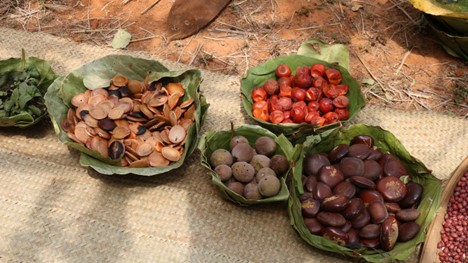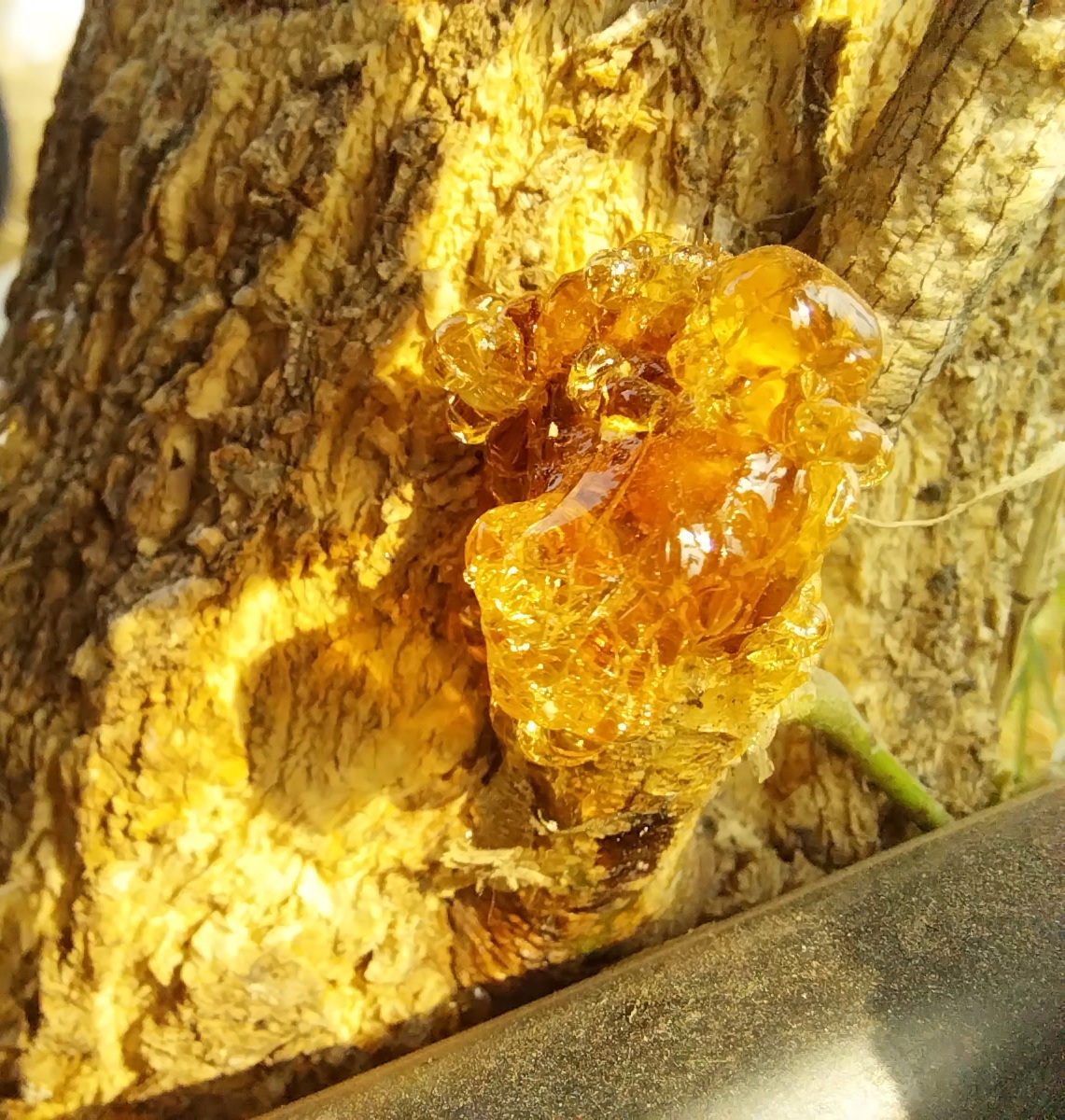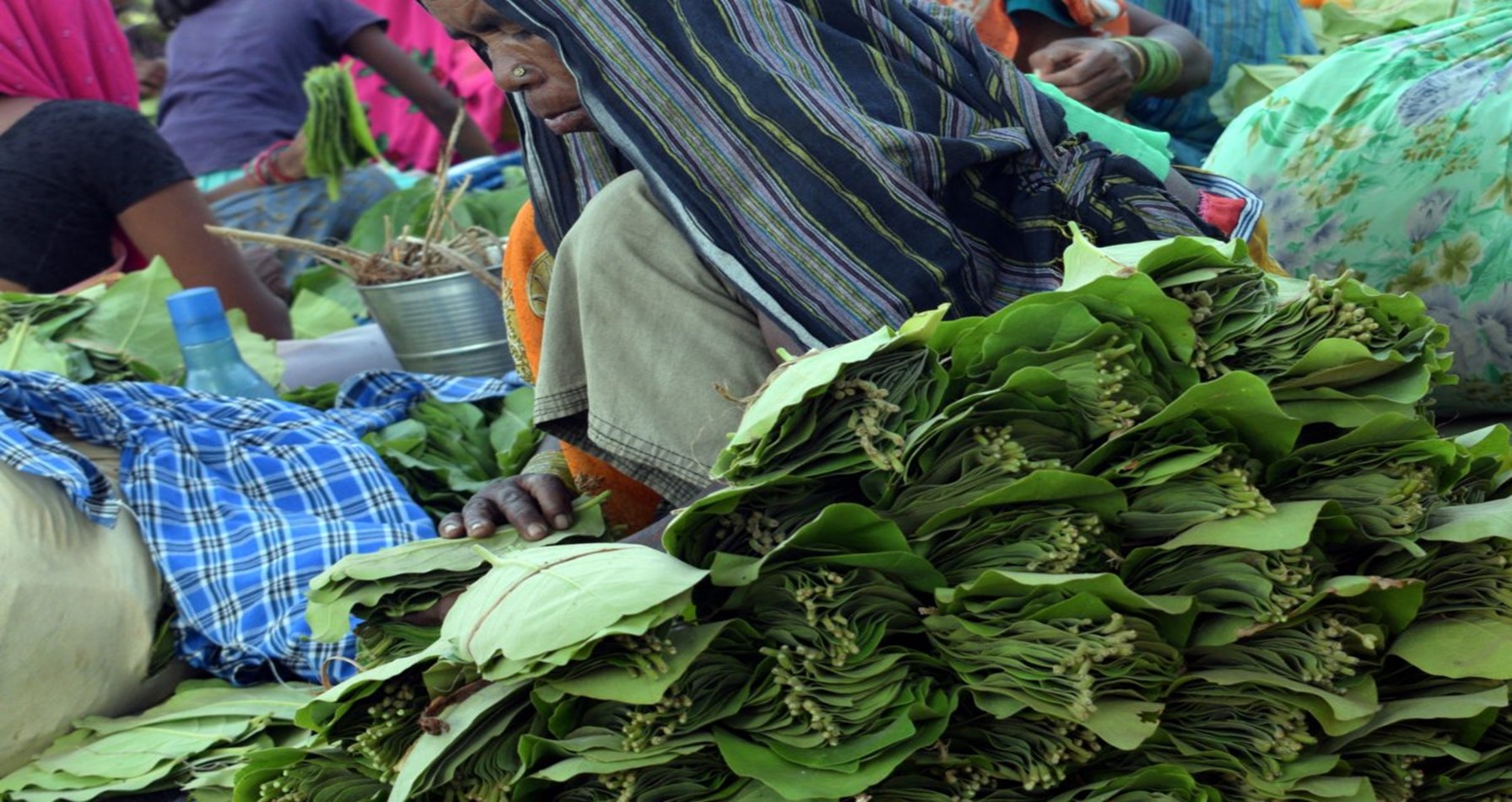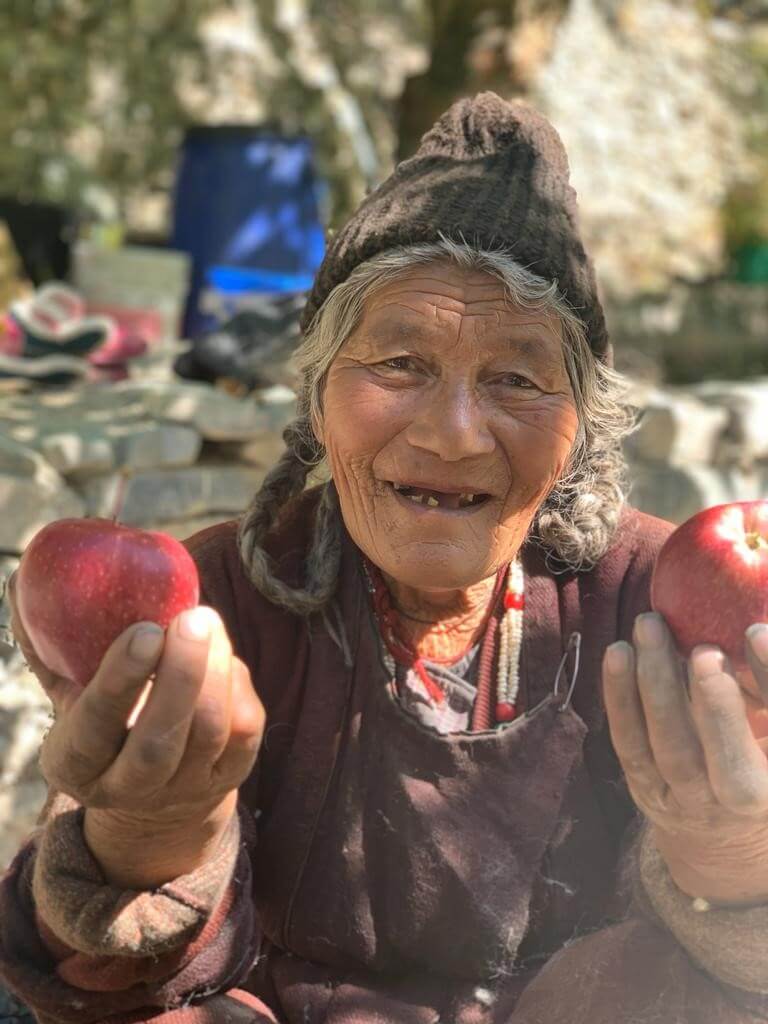When we talk about forests, what comes to our minds, is wild animals, big trees, wild herbs, shrubs, mushrooms, epiphytes, mangroves, heavy rainfalls, rivers, lakes, mountains, greenery, unended grasslands, barren lands, debarred land, an undisturbed ecosystem which is the main driver of the healthy environment. Forests are sustained factories of natural resources. They produce the products without any anthropogenic involvement. The potential of this factory is under-explored. The lack of luxury and sophistication in these products doesn’t get them into the limelight. These products have tremendous potential in generating livelihood for rural and forest fringe tribal communities.
A forest fringe community is a group of people living in and around the forests. These tribal people live a very miserable life, devoid of the facilities provided by the local authorities. These tribal communities totally depend on the forests for their daily needs. In recent years, the population of world is increasing very rapidly. An increasing population means more competition for the livelihood generation. For the upliftment of the marginalized farmers and the forest fringe communities, there is a need for another alternative sustainable income source. Here comes the role of Forest Factory.
Forest Factory produce many natural resources majorly divided into two parts
Major Forest Products – These contain the timber generated from the forests
Minor Forest Products – All the products other than major forest products or of non-timber origin known as Minor Forest products
All biological materials other than wood that are taken from natural or man-made forests for use by living beings and have both a monetary and consumptive value are collectively referred to as Non-Timber Forest Products (NTFPs). The term “NTFP” refers to items of biological origin other than wood that is obtained from forests, woodlands and trees outside forests. According to estimates, 275 million rural poor people in India—or 27% of the country’s population—rely at least partially on NTFPs for survival and a living. (Malhotra and Bhattacharya, 2010; Bhattacharya and Hayat, 2009)

What are NTFPs?
NTFPs stands for Non-Timber Forest Products. Non-timber forest products are useful substances and materials obtained from forests, other than timber. They include fruits, leaves (tendu leaves), spices, dry fruits, resins, gum, fodder, lac, edible seeds, medicinal plants, essential oils, fibres, bamboo, canes, tannins, oils, honey, natural dyes, animal products and many more products.
The economy of NTFPs
In India, about 40% of all official forest revenues and 55% of all jobs in the sector come from NTFPs. In India, about 500 million people who live in and around forests depend on NTFPs as a vital part of their sustenance (World Resources Institute, 1990).
In Madhya Pradesh, revenue from NTFPs ranged from Rs 234 to Rs 5569 (US $3-$70) per hectare per year, with a mean of Rs 2299 (US $29), according to a survey of 10 forest protection committees under the Joint Forest Management programme. (Malhotra et al., 1991).
Importance of NTFPs in livelihood enhancement
NTFPs have a tremendous potential to create large-scale employment opportunities thereby helping in reducing poverty and empowering tribal and poor people of the most backward districts of the country. Non-timber forest products are a vital source of livelihood for a large proportion of the poor rural population and for people living in and around the forest in most tropical countries. Forest communities are forced to rely more on firewood obtained from forests due to a lack of fuel alternatives. However, each group has a different reason for collecting NTFPs. For instance, villages residing inside the forest gather a significant number of NTFPs primarily to meet their home requirements, whereas people living on the forest perimeter gather the majority of NTFPs mostly for commercial purposes rather than for domestic use.
However, since independence, the NTFP sector, known as “minor forest produce” (MFP) particularly implying products of plant origin, with few exceptions has sadly been ignored. Its actual contribution has been so significant that many State Forest Departments, especially after green felling was banned, earn the majority of their income from these NTFPs/MFPs (like tendu leaves). In the past, plants were mostly gathered and grown for the timber needed to make furniture, railroad sleepers, and firewood, among other things. Timber is the main resource that is obtained from forests during industrialization, or forests are largely farmed to generate timber for use in manufacturing ships, railway sleepers, etc. However, as government policies have changed to prioritize forest conservation above production forest, NTFPs become the major source of livelihood/income for the people living in and around the forests.
In the case study examining the function of NTFPs in Kadavakurichi Reserve Forest, Appasamy (1993) had a different experience (Palni Hills, Western Ghats). He discovered that at least 50% of the fuelwood gathered was for the market.
Many rural communities in the West Midnapore district of West Bengal receive up to 17% of their yearly family income through NTFPs (Malhotra et al., 1991). According to some estimates, the collection of NTFPs accounts for up to 35% of the income of tribal communities in India. Additionally, because NTFPs contain such a wide range of seasonal goods, returns are frequent and generally constant. Additionally, local NTFP processing can improve rural off-farm job options. Twenty to thirty per cent of India’s rural labour population receives up to fifty per cent of their income from small-scale forest-based industries, many of which are based on NTFPs. (Campbell, 1988).
The unregulated burning of dried Chir pine (Pinus roxburghii) needles, locally known as pirul, used to significantly harm the forest and ecosystem in Uttarakhand. Chir pine trees produce an enormous amount of underused leaf biomass, which contributes to several annual forest fires. This trash is thought to be produced at a rate of around 2 million tonnes annually. In 2009, the Uttarakhand Forest Department issued an invitation to commercial businesses to submit ideas for the acquisition of pine needles from the locals at a minimum cost of 1 per kg plus a little royalty. Yet, five businesses have expressed interest in using the gathered needles to make fire briquettes and the dried needles to generate electricity. This entire activity has created local employment opportunities and has been successful in controlling Forest fires. (Report, Planning Commission’s Working Group on Forests & Natural Resource Management, 2011)
NTFPs have the power to significantly reduce poverty and increase the empowerment of people, particularly tribal and underprivileged people, living in rural areas, in the nation’s most underdeveloped and impoverished districts. NTFPs offer a significant opportunity for the local establishment of green, small to medium-sized businesses.
Major Forest Factory products produced globally are-
- Gum Factory
In 2019, the Top importers of Gum Arabic are European Union ($71,942.23K, 62,751,400 Kg), France ($44,895.55K, 49,986,900 Kg), United States ($16,361.41K, 12,057,500 Kg), India ($17,172.25K, 32,407,900 Kg), Germany ($12,704.32K, 8,376,740 Kg) (Report, World Integrated Trade Solutions,2019).
Gum is a liquid converted into crystal after coming into contact with the outer environment. It is the sap of the tree stem that came out of the tree due to some injury or the tree is tapped for gum by stripping bits off the bark, from which gum then exudes.

- Leaves Factory
The Tribal Cooperative Marketing Development Federation of India reports that 75 lakh (7.5 million) individuals nationwide receive work through the collection of tendu leaves for a period of around three months. Aside from this, over 30 lakh (3 million) people rely on creating bidis from these leaves for their living. When Chhattisgarh became a separate state in 2000, a standard sack of tendu patta (containing 50k leaves) earned the collector 400 rupees. Till 2018, 1,800 rupees was given per sack of tendu patta. But after the new government came to power in 2018, its price was raised to 4,000 (50$) rupees per sack. Some other useful leaves:Lawsonia inermis (Mehndi), Cinnamomum tamala (Tejpatta).

- Fruit Factory
Many rare and exotic, export quality fruits like Mangustaan, Bael (Wood Apple), Karonda(Carandas Cherry), Targola/Taal (Ice Apple or Sugar Plum Fruit), Phalsa (Indian Sherbet Berries), Carambola (Star Fruit) found mostly in the valleys of India and can be harvested by forest dwellers and forest fringe communities living in and around those valleys and can help them in their livelihood enhancement.

- Bark Factory
Besides timber, tree bark is also being used by local people in many old traditional medicinal activities. Although they don’t know its medicinal properties, they are using it for generations. Tree bark of Terminalia arjuna (Arjun) used in the treatment of hypertension, congestive heart failure, and dyslipidemia, Azadirachta indica (Neem) in malaria, stomach and intestinal ulcers, skin diseases, pain, and fever, Acacia nilotica (babool) in venereal diseases, nausea, burns and wounds, stomachache and diarrhoea. 100 gm bark powder of Arjun and Neem costs approximately 100₹ and babool bark powder costs 150₹(2-3$)/100gm on mostly e-commerce platforms which tells its economic value and growth potential in the coming future.
Processed products of forest factories add additional monetary benefits like essential oils, spices, medicines, organic insecticides and pesticides etc. due to their high economic values.
Many wild plants’ fruits, leaves and legumes have been used for ages to make traditional pickles which cost 250 to 500₹($4-$7) per 500gm in the E-commerce market. As an example in Rajasthan fruits of Cordia dichotoma (lisoda), Cappari decidua (kair), and pods of Prosopis cineraria (khejri), are being used to make pickles not only for domestic consumption but also for the commercial market also.
Forest factories can play a vital role in livelihood enhancement and upliftment of society. All we have to do is to explore their role and uses in our daily needs and educate people about this side of the forests.
References
https://www.cifor.org/Publications/Corporate/FactSheet/ntfp.htm
https://www.wri.org/research/world-resources-1990-91
Bhattacharya, P., & Hayat, S. F. (2009). Sustainable NTFP management for livelihood and income generation of tribal communities: A case from Madhya Pradesh, India. Non timber Forest Products: Conservation Management and Policy in the Tropics”. Ed. By Shaanker R. Uma, Ankita J. Hiremath, Gladwin C. Joseph & Nitin D. Rai. Published by ATTREE & University of Agriculture Science, Bangalore, 21-34.
Belcher, B., Ruiz-Pérez, M., & Achdiawan, R. (2005). Global patterns and trends in the use and management of commercial NTFPs: implications for livelihoods and conservation. World development, 33(9), 1435-1452.
Mahapatra, A. K., & Tewari, D. D. (2005). Importance of non-timber forest products in the economic valuation of dry deciduous forests of India. Forest Policy and Economics, 7(3), 455-467.
Malhotra, K. C., Dutta, M., Vasulu, T. S., Yadav, G., & Adhikari, M. (1991). Role of NTFP in village economy: a household survey in Jamboni range, Midnapore district. West Bengal. Mimeo. IIBRAD. Calcutta, India.
Malhotra, K.C. and P. Bhattacharya (2010). Forest and Livelihood. CESS, Hyderabad: 246.

